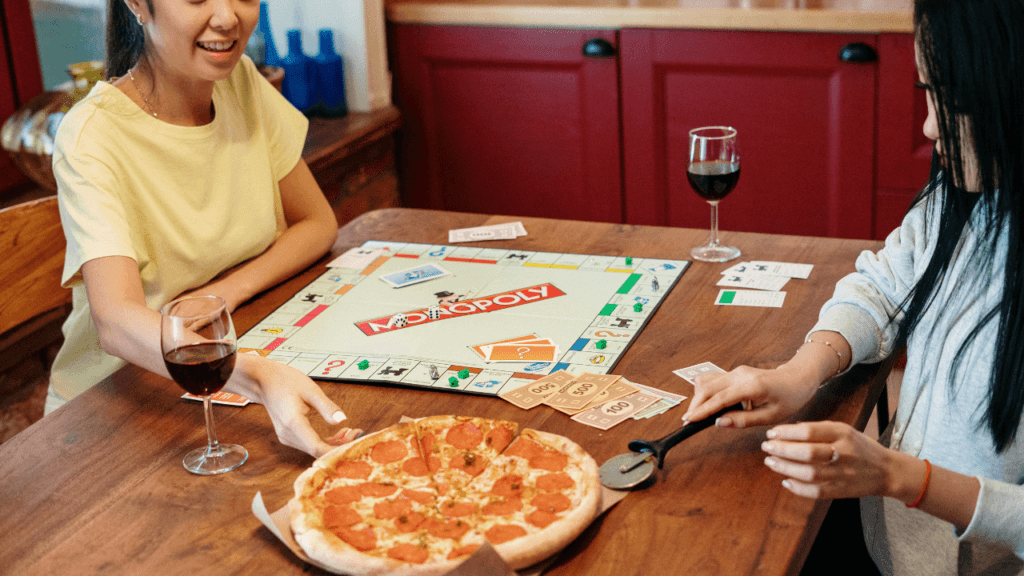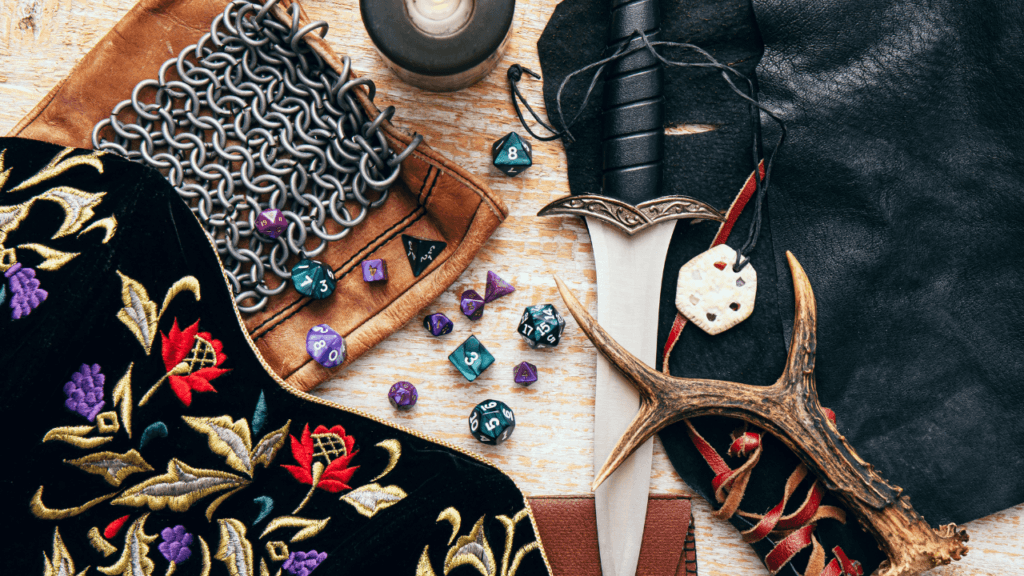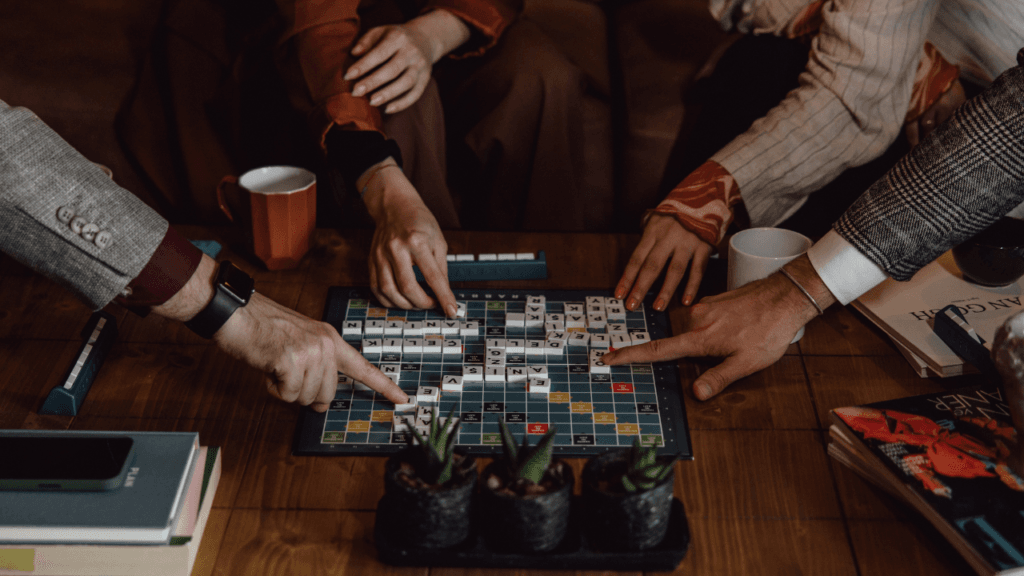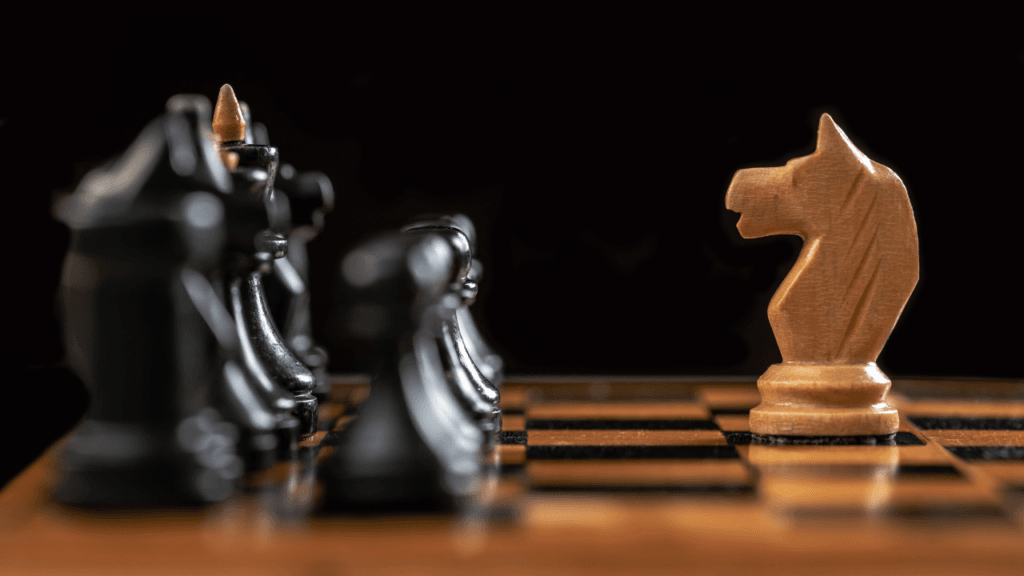You know that feeling when you pick up an old board game and memories come flooding back? That’s exactly what got me hooked on collecting these incredible pieces of history. Board games have been bringing people together for over 5,000 years – from ancient Egyptians playing Senet to modern families battling it out over Monopoly.
I still remember those Sunday nights at my house, gathered around our old Monopoly board. The satisfying clink of those original metal pieces sliding across the board, the softly worn edges of the property cards – these weren’t flaws, they were the history of countless family battles over Park Place. That’s the magic you just can’t get from staring at a screen, and it is why vintage board games still captivate collectors and casual players alike.
Here at Antique Grove, we’ve spent countless hours exploring the fascinating world of vintage board games, and let me tell you – there are some amazing stories hiding in those old boxes. Stories that we want to share with fellow enthusiasts and newcomers alike.

Types of Vintage Board Games
Strategy & War Games: The Art of Tactical Thinking
Risk (1959) revolutionized the world of strategic board gaming, introducing players to the thrilling pursuit of global domination. Early editions, featuring wooden pieces command astronomical prices among collectors – their hand-finished armies and territory cards showcasing a craftsmanship that disappeared with mass production. While the 40th Anniversary Edition introduced innovative scenarios, collectors particularly prize the 1959-1963 editions for their superior wood components and lithographed boards, demonstrating how this classic continues to evolve while maintaining its vintage charm.

For history enthusiasts, Axis & Allies stands as the definitive World War II strategy game. The 50th Anniversary Edition is a holy grail among collectors for its museum-quality miniatures and meticulously researched maps. The early editions with metal pieces? Pure craftsmanship you just don’t see anymore. A complete, mint condition copy from the first production run can sell for over $1,000 at specialist auctions. And trust me, it’s worth every penny if you’re serious about collecting.
Diplomacy (1959) redefined warfare gaming by eliminating chance entirely. This Cold War-era masterpiece trades dice rolls for pure negotiation and strategy. Original editions feature striking lithographic maps that capture the geopolitical tensions of their era. Here’s a fun bit of trivia: rumor has it JFK owned a first edition, though nobody’s ever proven it. If you’re hunting for the holy grail, look for the 1961 “Numbers Edition,” which included unique statistical strategy guides. It’s a game of wits, where trust is as valuable as any territory.

Family & Party Games: Timeless Entertainment for Everyone
Monopoly‘s story since 1935 is basically America’s economic history in board game form.The Pre-WWII editions are notable for their all-metal tokens, each hand-finished with incredible precision. The legendary White Box edition (1936-1937) made headlines when a pristine copy sold for $146,500 at auction. Even “common” editions from the 1940s showcase superior craftsmanship, with crisp typography and fade-resistant colors that modern versions can’t match. Each edition tells its own story, from the Great Depression to the post-war economic boom.

Collector tip: examine the title deed cards under UV light – authentic pre-1950s editions have a distinctive fluorescent signature.
Clue (1949) took murder mystery from the page to the parlor, and what a journey it’s been. Who doesn’t love a good mystery? Clue lets players become detectives, piecing together clues to solve a murder. The early editions had these gorgeously hand-painted character portraits and solid brass weapons. If you want to see board game luxury taken to the extreme, check out the Franklin Mint edition – we’re talking gold-plated weapons and meticulously detailed character pieces. For hardcore collectors, finding a first-edition copy (identifiable by their unique Tudor Mansion floor plan) is like striking gold.

Sorry! reveals the fascinating evolution of American game design. The game’s straightforward mechanics make it a favorite for family game nights. It’s a game that brings people together, where the thrill of sending opponents back to start is always met with laughter and playful banter. The coveted 1958 Parker Brothers edition features Art Deco-inspired graphics and distinctive bakelite playing pieces – materials that develop a beautiful patina over time. Original editions included hand-numbered cards, making each set subtly unique. Savvy collectors look for the rare “blue box” variant from 1959, which included experimental transparent pawns.
Adventure & Role-Playing Games: Pioneers of Immersive Gaming

HeroQuest (1989) was a game-changer – literally. It bridged that gap between regular board games and full-on role-playing adventure, with many of them drawing inspiration from its mechanics and rich storytelling. The original set came with 103 miniatures that collectors now treat like tiny works of art. Found a complete set with unpunched cardboard and sealed miniature bags? You’re looking at $2,000 or more.
Here’s an insider tip I picked up: authentic furniture pieces from the base set have tiny maker’s marks under the bases – a detail many counterfeits miss.
Dungeon! (1975) represents a crucial milestone in fantasy gaming history. The early editions showcase David C. Sutherland III’s artwork – the same artist who would later define how we picture Dungeons & Dragons. The game’s level based dungeon system influenced many later designs. Want to spot an original? Run your fingers over the cards – they used this special linen-finish stock that feels completely different from later printings.
Then there’s Cosmic Encounter (1977), the game that threw out the rulebook on, well, rulebooks. Every alien race has its own special powers, ensuring no two games are the same. And each session is a new adventure with unexpected alliances and betrayals. Original editions, feature screen-printed alien cards with unique artwork that later versions never matched. Complete sets with all expansion packs are exceedingly rare – fewer than 50 complete sets with all expansion packs known to exist

Trivia & Educational Games: Learning Through Play.
Scrabble has evolved significantly since 1948, but vintage editions showcase American manufacturing at its finest.Pre-1955 editions used solid maple tiles with hand-routed letters,finished with a proprietary process that prevents wearing. The 1953 Deluxe Edition, with its mahogany veneer board and precision-engineered rotating mechanism, represents the pinnacle of mid-century game craftsmanship. Collectors should look for the distinctive “cross-hatch” pattern on early tile racks – a sign of authentic pre-mass production sets.

Trivial Pursuit (1981) did more than just quiz people -it preserved cultural history. serves as an invaluable time capsule of mid-century Americana. Original Canadian-market editions, produced before Selchow & Righter acquired the rights, feature unique questions and are particularly sought after. Complete sets include the often-lost question card box lid, which serious collectors consider essential for maximum value.
The Enduring Value of Vintage Board Games
Nostalgia & Emotional Connection
It’s not just about nostalgia (though that’s a big part of it). These games tell stories – our stories. During our research at Antique Grove we’ve found so many wonderful stories of collectors reconnecting with their childhood through these treasured items. One of the most touching was from a collector who found a 1962 Scrabble set at an estate sale – the exact same one their grandmother used to teach them vocabulary. Now it’s displayed proudly in his collection, still sparking that same joy decades later.
These games transcend mere entertainment, becoming vessels for family heritage. Through extensive interviews with collectors across forums and conventions we’ve documented how vintage games bridge the generational gap. A 1959 Risk set shows Cold War anxieties in its territory cards, early Monopoly editions show America’s evolving relationship with wealth and property. Each game is like a little window to the past.
Rarity and Limited Editions
The scarcity of certain vintage games drives both their monetary and historical value. Take Fireball Island (1986) – its revolutionary 3D board and marble-action mechanics showcased peak 1980s innovation in game design. Mint condition copies are vanishingly rare, with fewer than 100 complete sets known to exist. Current market values exceed $2,000 for sealed copies.
The 1940s Totopoly and 1960s Orient Express exemplify how limited production runs create exceptional collectibles. These games often feature hand-assembled components and specialized materials like bakelite playing pieces or hand-painted metal miniatures.
Expert tip: authentic Orient Express editions include unique brass train tokens – a detail many reproductions miss.
Cultural and Historical Significance
Vintage board games are a reflection of their time. Early Risk editions (1959-1962) featuring fascinating geopolitical quirks in their territory cards, reflecting shifting Cold War alliances. Original Monopoly sets from different decades adjust property values and card text to reflect contemporary real estate markets – making them valuable resources for economic historians.
Diplomacy’s complex alliance system was used to train military strategy in the 1960s. Recently discovered documents show that several military academies used the game to teach diplomatic theory. These games are not just entertainment; they are primary historical sources that capture the spirit of the times in a playable form.
Craftsmanship and Aesthetic
Vintage board games showcase production quality that modern manufacturing simply can’t replicate. The hand-painted miniatures in early editions, solid wood components with natural grain patterns, and meticulously detailed artwork represent a golden age of game craftsmanship. Shenanigans Carnival‘s (1962) mechanical components, for instance, were engineered to the same standards as professional arcade equipment – explaining why working copies still operate flawlessly today.
Beyond gameplay, these games represent important milestones in commercial art. Vintage box covers and boards often feature work by renowned illustrators of their era. Expert collectors can date editions by analyzing typography styles and printing techniques, making these games valuable resources for design historians.
The Hidden Benefits of Playing Vintage Board Games

The appeal of vintage board games extends beyond entertainment, they provide unique advantages that modern gaming often can’t match. Our research reveals surprising benefits that make these classics more relevant than ever.
Family bonding through vintage board games creates lasting memories and stronger relationships. Research from Happier Human demonstrates that replacing digital entertainment with traditional board games can strengthen family connections by 60%. Whether orchestrating world domination in Risk or building vocabularies through Scrabble, you are actually talking and laughing with real people, not just staring at your phone.
Speaking of Scrabble, the cognitive benefits are equally impressive. This groundbreaking study from University of Edinburgh discovered that regular players of strategic board games showed better cognitive function as they aged. Playing Monopoly exercises financial planning skills, while Chess really makes you think ahead. You don’t get that kind of mental workout from most modern quick-play games.
Perhaps most surprisingly, vintage board games are great stress relievers. The tactile pleasure of rolling bakelite dice, moving carved wooden pieces, and engaging with physical game elements triggers a mindfulness response that digital games can’t replicate. Our community reports that they find vintage games way more relaxing than their digital counterparts. Maybe it’s because you can’t rush through them, or maybe it’s just the satisfaction of handling something real..
For those of us who love restoring these games, there’s an extra layer of joy. Over on BoardGameGeek, you’ll find thousands of restoration projects where people have brought these pieces of gaming history back to life. It’s pretty rewarding to know you’re preserving something special for the next generation.
Collector’s Corner: Our Top Picks
Looking to start collecting vintage board games? Let’s dive into the must-have classics, uncover some hidden gems, and learn how to protect these treasures for years to come.
The Must-Have Classics
Every serious collection starts with cornerstone pieces that define the hobby. These aren’t just games – they’re snapshots of American cultural history.
Early Monopoly Editions are like the crown jewels for collecting, especially:
- The White Box Edition (1934-1935): Recognizable by its Art Deco styling and superior components
- The Black Box Edition (1935-1937): Features the Mr. Monopoly character, and represents the game’s first mass-market success
What makes these editions special? Beyond their historical significance, they showcase Depression-era manufacturing techniques, from the thick cardstock used in property cards to the detailed pewter playing pieces.
Risk 40th Anniversary Edition (1999)presents a masterclass in commemorative game design. With its gold-finished pieces and leather-textured map board, it demonstrates how classic games can be elevated while preserving their essence.
Pro tip: When hunting for this edition, check the die-cast armies carefully – they’re often the first components to show wear.
Hidden Treasures
While everyone hunts the obvious classics, savvy collectors know the real gems often lurk in unexpected places.
Escape from Atlantis (1982) – this game is just brilliant. What sets it apart:
- Modular board pieces that physically sink during gameplay
- Detailed plastic components that have held up amazingly well
- Innovative mechanics that influenced modern cooperative games
Finding a complete set is challenging but rewarding – look especially for the distinctive blue water pieces, which were often lost.
Dark Tower (1981) is where analog and digital meet. This pioneering design has:
- An electronic central tower with primitive but charming LED displays
- Unique combination of electronics and traditional gameplay
- Sound effects that still work after 40+ years (if properly maintained)
Collector’s tip: When examining a Dark Tower, listen for clean electronic beeps during testing – scratchy sounds often indicate failing components.
Preserving Your Collection: Professional Techniques
Storage Solutions
Creating the optimal storage environment for vintage board games doesn’t require museum-grade facilities. Follow these field-tested methods from veteran collectors:
- Temperature Control: Maintain 65-75°F (18-24°C)
- Humidity Management:
- Target 45-50% relative humidity
- Place 2-3 silica gel packets in each game box
- Replace packets annually
- Light Protection: Store games in opaque containers or closets
- Position Matters: Stack boxes horizontally, never more than 4-5 high

Smart Buying Strategies
When evaluating vintage board games for purchase, conduct this thorough inspection ( learned from plenty of rookie mistakes):
Box Condition Assessment:
- Check corner integrity (splitting indicates moisture damage)
- Examine box bottom for shelf wear patterns
- Look for original price stickers (can help authenticate age)
Component Verification:
- Count ALL pieces against original inventory list
- Check card stock for consistent coloring
- Verify board fold patterns, it tells you if it’s from the era it claims to be
Authentication Tips:
- Study print registration marks on cards
- Compare font styles with known authentic copies
- Examine box construction methods (glue patterns, corner tape)
Beyond Traditional Sources
While online marketplaces offer convenience, exceptional finds often surface in unexpected places:
- Estate sales (get there early, and bring a UV light – trust me)
- Church rummage sales, especially in older neighborhoods
- Local auction houses (make friends with the auctioneers, they’ll keep an eye out for you)
- Antique malls (check regularly, dealers often don’t know what these games are worth)
Preserving More Than Just Games

As we wrap up our journey through the world of vintage board games, remember that we’re not just collecting cardboard and plastic – we’re preserving moments of joy, challenge, and connection. Every worn game box tells a story of family gatherings, friendly competitions, and hours of entertainment.
These games represent more than just pastimes; they’re bridges between generations, teaching tools that develop strategic thinking, and portals to simpler times. In an age of endless digital distractions, there’s something profoundly satisfying about gathering around a vintage board game, hearing the shuffle of cards, and creating new memories with old favorites.
Whether you’re a serious collector or simply someone who appreciates the charm of classic games, you’re part of a community that values tradition, craftsmanship, and the timeless appeal of playing together. So next time you’re considering a new addition to your collection, remember: you’re not just buying a game – you’re preserving a piece of gaming history for future generations to discover and enjoy.
And, if you’ve got any great game stories or collecting tips of your own, we’d love to hear them!

